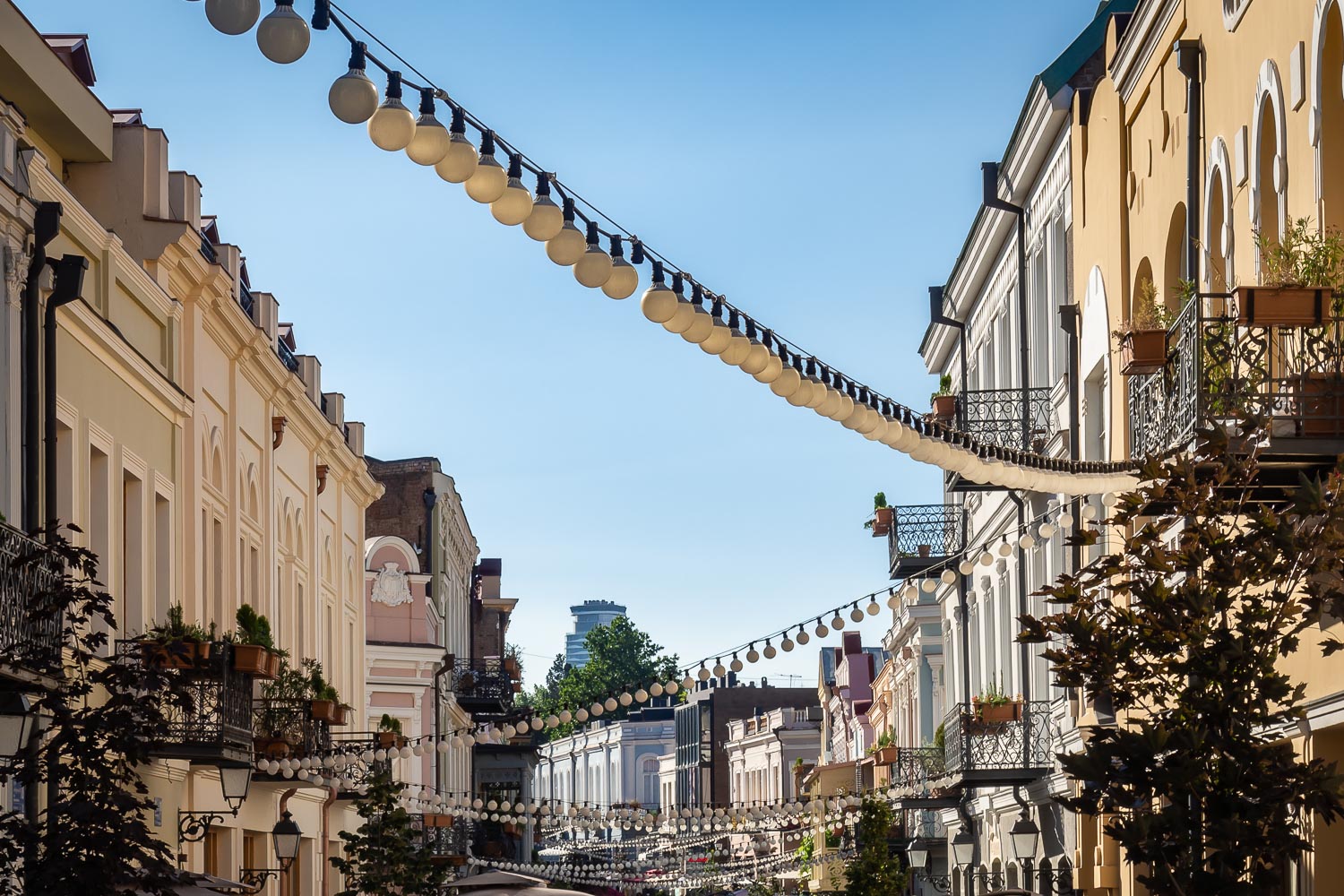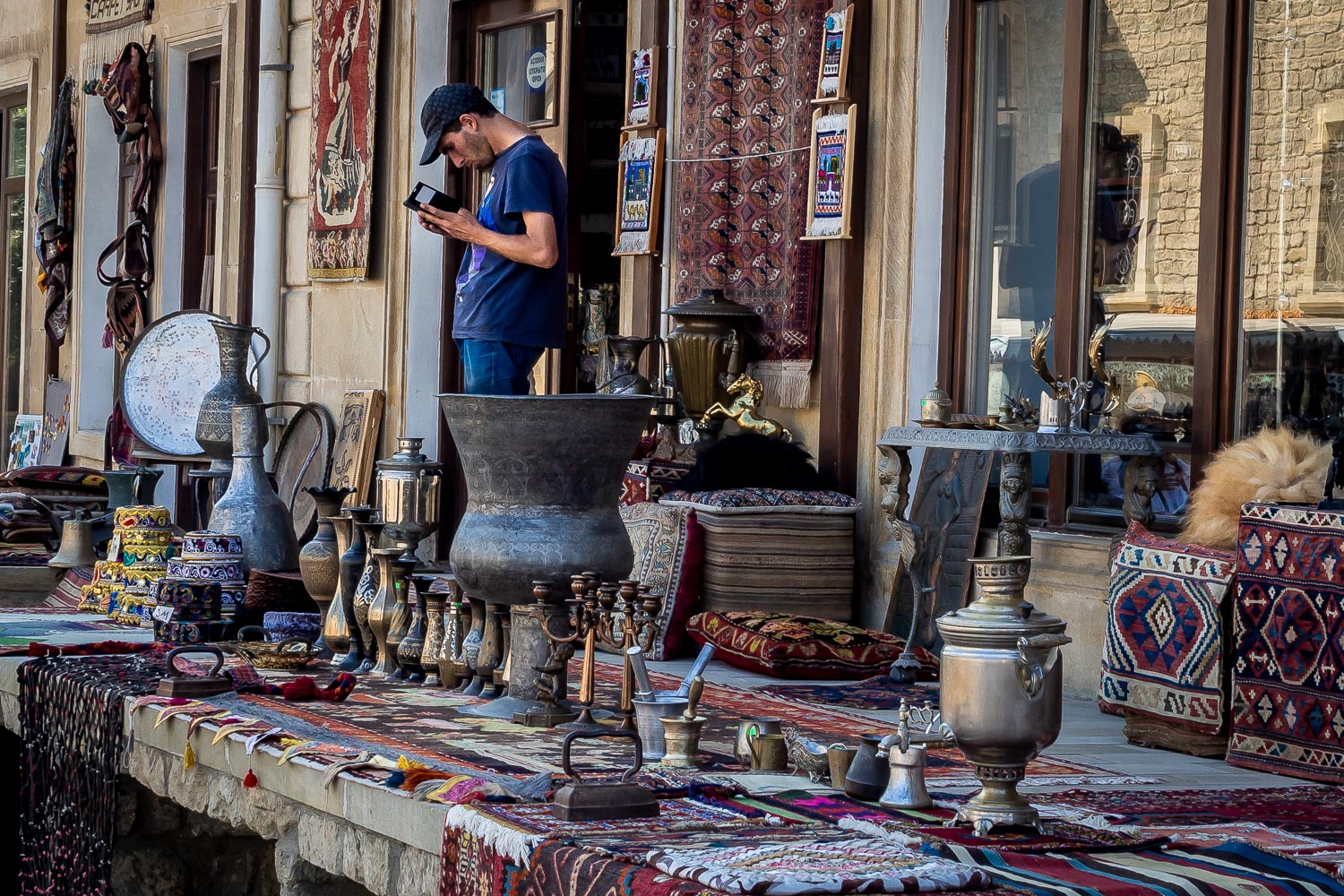The countries of the Caucasus region – Georgia, Armenia, and Azerbaijan – will revive even the most blasé globetrotter. Ranging from snow-peaked mountains in the north to the sun drenched Caspian Sea in the south, the former Soviet republics offers grand landscapes, cobblestone villages, and brutalist architecture. A low-scale tourist destination and the last outpost of continental Europe.
1 Kazbegi, Georgia. The most dramatic landscapes of the Caucasus region are found in Georgia. Head north of Tbilisi and set course towards Kazbegi, best described as a mix between New Zealand and Switzerland. Follow the Georgian Military Road, described in the 1914s edition of Baedeker’s Russia as one of the world’s most beautiful, and enter a world of green valleys, roaring rivers, and snow-capped mountains. Base your stay in Stepantsminda and trek to the Gergeti Trinity Church, a solitary chapel situated on a 360 degree mountain top.
2 Kakheti, Georgia. The rolling hills of Kakheti in eastern Georgia has been a wine producing region for more than eight thousand years. With sunny summers and frost-free winters, the grapes are harvest by thousands of wine farms, even monasteries, scattered throughout the countryside. Base your stay in Signagi, famous for its Rkatsiteli grape wine and cultural monuments. The small town overlooks the Alazani Valley, making its wooden balconies and red painted rooftops shine against a snow-peaked backdrop.
3 Yerevan, Armenia. The most exciting way to arrive in Yerevan is by South Caucasus Railway, operated from Tbilisi since 1902. Step out of the 100 year old station and find yourself in a city built to mimic Paris, Vienna, and Saint Petersburg. Take a walk on Mashtots Avenue, try local Armenian food, and catch the sunset at the cubism inspired Yerevan Cathedral. The most obscure place is the partially completed Soviet built Yerevan Cascade, an giant complex of Brutalist architecture featuring modernist sculptures and a glimpse of Mount Ararat from the top.
4 Mtskheta, Georgia. As one of the UNESCO world heritage sites of Georgia, Mtskheta is the perfect half day excursion from Tbilisi. The town gravitates around the beautiful Svetitskhoveli Cathedral, a nostalgic place of long lost memories. Get inspired by the monochromatic color scheme and browse the small-scale markets. On your way back, cross the Matkvari River and visit the cliff-hanging Jvari Monastery overlooking the surrounding valley.
5 Tbilisi, Georgia. The capital of Georgia is the get-in point to the Caucasus region. From here you can explore the country in every direction as well as travel to Yerevan by train. Divided by the Kura River, the 20th-century buildings on David Agmashenebeli Avenue, the most beautiful street in Tbilisi, contrast the Soviet styled Ministry of Highway Construction, Palace of Rituals, and the Museum of Archaeology. When done city sightseeing, go explore the superb Georgian kitchen, not only khachapuri, but the eclectic dishes found in upscale restaurants.
6 Baku, Azerbaijan. Situated on the shore of the Caspian Sea, the Azerbaijan capital is the last outpost of continental Europe. It’s also the “Dubai of the Caucasus”, if there is such a place. The oil rich country, manifested by pulsating oil pumps and a six lane highway from the the airport, is the most modern city of the Caucasus. The clean cut skyscrapers contrast the historical core of Old Baku and make the Fire Mountains outside of the city even more mysterious.
7 Gori, Georgia. Infamous for being the hometown of Soviet leader Josef Stalin, this is also the prime and perhaps only reason for visit Gori. Take a walk on Stalin Boulevard and visit the Joseph Stalin Museum, showcasing the dictator’s personal belongs, clothes and furnitures, and death mask taken shortly after his death. Outside is the 83 ton railway carriage, used for escorting Stalin to the Yalta Conference in 1945.
Written by Erik Ekberger. Photography: Erik Ekberger
Copyright © 2017-2024. Travelgrapher® is a registered trademark. All rights reserved.
Travelgrapher.com supports a democratic, gender-equal, peaceful and inclusive society where equitable health, human rights and the rule of law are respected and people’s vulnerability to crises and disasters is reduced.



































